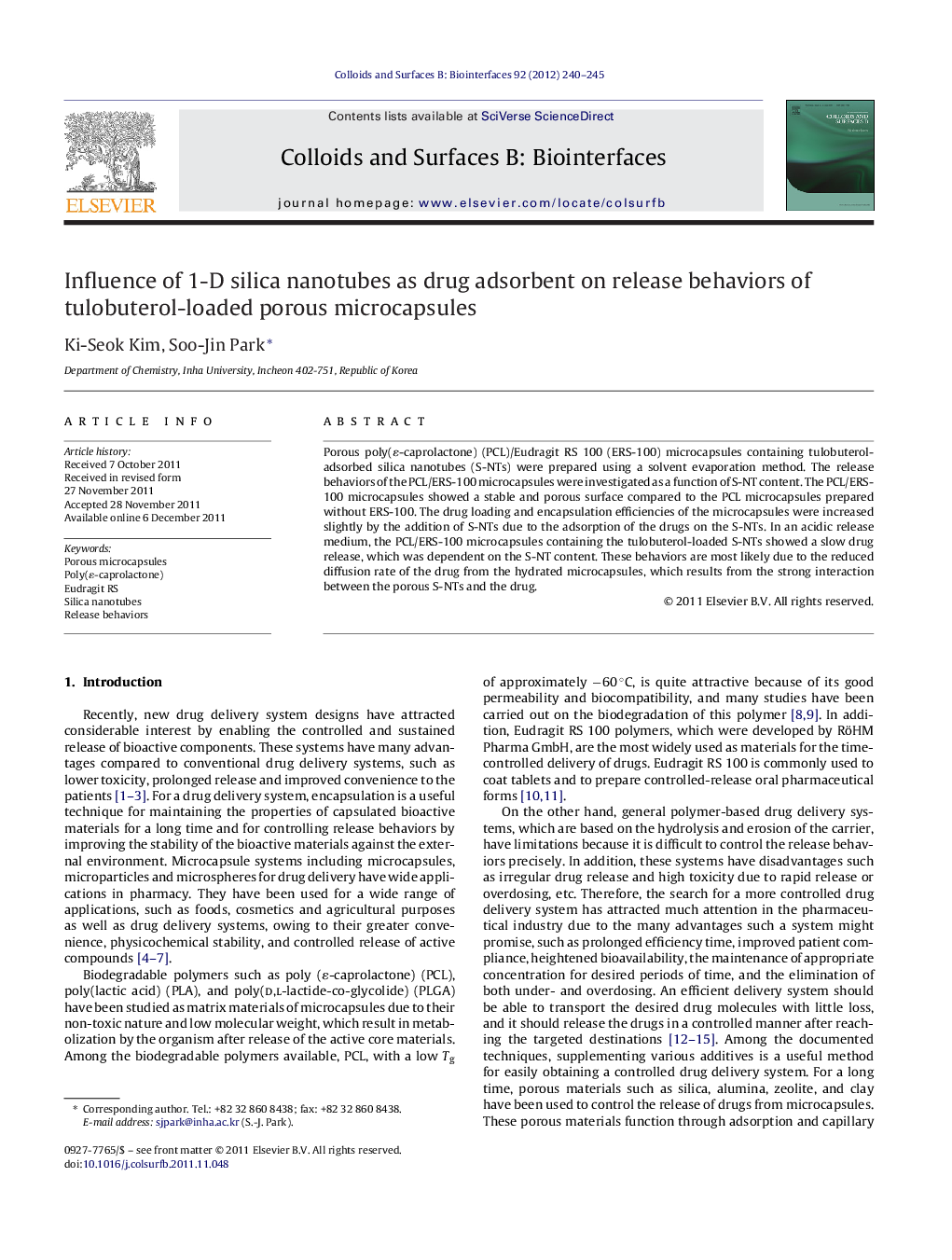| Article ID | Journal | Published Year | Pages | File Type |
|---|---|---|---|---|
| 600663 | Colloids and Surfaces B: Biointerfaces | 2012 | 6 Pages |
Porous poly(ɛ-caprolactone) (PCL)/Eudragit RS 100 (ERS-100) microcapsules containing tulobuterol-adsorbed silica nanotubes (S-NTs) were prepared using a solvent evaporation method. The release behaviors of the PCL/ERS-100 microcapsules were investigated as a function of S-NT content. The PCL/ERS-100 microcapsules showed a stable and porous surface compared to the PCL microcapsules prepared without ERS-100. The drug loading and encapsulation efficiencies of the microcapsules were increased slightly by the addition of S-NTs due to the adsorption of the drugs on the S-NTs. In an acidic release medium, the PCL/ERS-100 microcapsules containing the tulobuterol-loaded S-NTs showed a slow drug release, which was dependent on the S-NT content. These behaviors are most likely due to the reduced diffusion rate of the drug from the hydrated microcapsules, which results from the strong interaction between the porous S-NTs and the drug.
Graphical abstractThis described the sustained release behaviors of silica nanotube-loaded microcapsules.Figure optionsDownload full-size imageDownload as PowerPoint slideHighlights► Drug-loaded porous microcapsules were prepared using co-polymer, PCL/Eudragit RS. ► Silica nanotubes (S-NTs) as drug adsorbent were used for sustained release of drugs. ► Porous microcapsules containing drug-loaded S-NTs showed slower release behavior. ► The release rate of the drugs cloud be controlled by porosity and S-NTs content. ► It was ascribed to delay effect by strong interaction between porous S-NTs and drugs.
